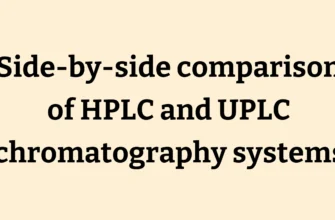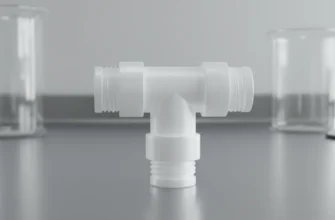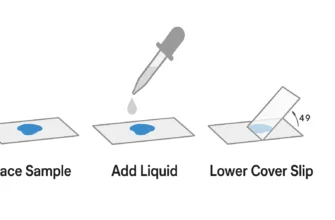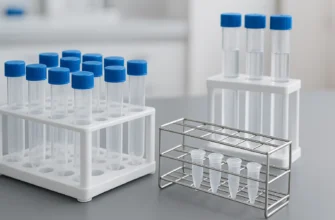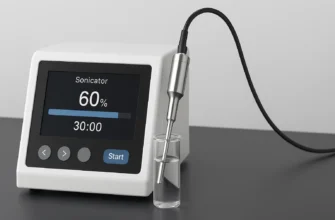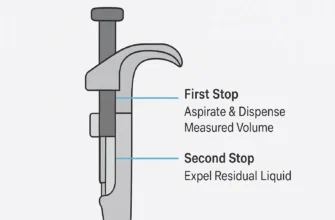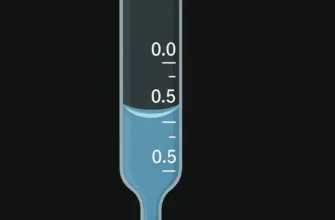The modern laboratory is a hub of discovery, driving progress in fields like molecular biology, mass spectrometry, clinical diagnostics, and next-generation sequencing. Yet, this innovation comes at an environmental cost. Bioscientific research laboratories generate an estimated 5.5 million tons of plastic waste annually, a significant portion of which consists of single-use plastics like micropipette tips and pipette racks. With the global pipette tips market projected to reach USD 1.56 billion by 2033, the scale of this waste stream is set to expand dramatically. This guide moves beyond the problem, offering a comprehensive framework for managing pipette tip waste through responsible disposal, innovative recycling, and practical solutions for empty pipette tip boxes.
The Silent Epidemic of Lab Plastic Waste
The reliance on disposable plastics in science is rooted in the need for sterility and the prevention of cross-contamination. This has led to a culture of single-use consumption that generates a staggering amount of waste. Unlike consumer plastics, lab plastics are often perceived as difficult or impossible to recycle due to potential contamination, leading to a default pathway: the landfill. This linear “take-make-dispose” model, fueled by the fossil fuel industry and single-use economy, is unsustainable and overlooks significant opportunities for resource recovery and environmental sustainability.
Why Pipette Tip Waste Demands Our Attention
Pipette tips and their racks are emblematic of the single-use plastic problem in laboratories. Every experiment, from PCR instruments to Ion Torrent™ chips and diagnostic tests, can consume dozens or even hundreds of single-use pipette tips. Each tip, though small, contributes to a massive collective footprint. Laboratories unnecessarily discard substantial volumes of pipette tips after a single use, with clean plastic waste often dominated by pipette tip boxes (up to 80% in some audits). Addressing this specific waste stream is a critical and high-impact step a lab can take to reduce its environmental footprint.
A Holistic Approach to Sustainability: Reduce, Reuse, Recycle
Effectively tackling pipette tip waste requires a multi-faceted strategy based on the established waste management hierarchy. The most impactful action is to Reduce consumption at the source. The next best option is to Reuse materials whenever possible. Finally, for items that cannot be reduced or reused, Recycle becomes the crucial final step to divert plastic from landfills and create a more circular economy. This guide will explore practical strategies for each of these pillars, incorporating evidence-based sustainability practices.
Understanding Pipette Tip Waste: Materials, Contamination, & Impact
Before implementing solutions, it’s essential to understand the nature of the waste itself. Not all lab plastics are created equal, and proper management begins with knowledge of their material composition, potential contamination, and environmental impact.
The Anatomy of a Pipette Tip: Material Science Matters
The vast majority of single-use pipette tips are manufactured from Polypropylene (PP), a thermoplastic polymer designated with the Resin Identification Code (RIC) #5. Polypropylene is chosen for its clarity, chemical resistance, and ability to be autoclaved. While technically recyclable, its path to recycling is often complicated by its small size and the potential for contamination. Understanding that you are primarily dealing with a single, high-quality plastic type is the first step in identifying viable recycling pathways for various plastic types.
Categorizing Lab Waste: A Critical First Step
Proper waste segregation is paramount for both safety and sustainability. Pipette tip waste generally falls into two categories:
-
Non-Hazardous: Tips used with non-hazardous buffers, sterile water, or other benign reagents. This stream has the highest potential for recycling.
-
Hazardous/Biohazardous: Tips that have come into contact with infectious agents, human-derived materials, radioactive waste, chemical waste, or biologically contaminated pipette tips. This waste must be decontaminated (e.g., via autoclave-based sterilization or UV-based decontamination) and disposed of according to strict institutional and federal regulations, often marked with specific hazard symbols. Segregating these streams at the point of use is non-negotiable, often involving sharps containers or dedicated waste containers.
The Environmental Footprint of Pipette Tip Waste
When non-hazardous pipette tip waste is sent to a landfill, it contributes to the broader plastic waste crisis. Derived from the fossil fuel industry, these plastics persist in the environment for centuries. The single-use economy they represent depletes finite resources to create products designed for minutes of use. This linear model not only fills landfills but also represents a significant loss of valuable material that could be reprocessed into new goods, perpetuating a cycle of extraction and disposal. Global plastic waste is expected to reach 460 million tonnes annually by 2025, underscoring the need for emissions reductions and water conservation in lab practices.
Responsible Disposal of Used Pipette Tips: Ensuring Safety and Compliance
For pipette tip waste that cannot be recycled or reused—particularly hazardous waste—safe and compliant disposal is the only option. This process requires diligence and adherence to established protocols, often involving the Environmental Health & Safety (EHS) or HS&E department.
Best Practices for Non-Contaminated Pipette Tips
Even for non-contaminated tips destined for the landfill, best practices should be followed. Collect tips in designated, properly labeled recycling containers or puncture-proof waste containers. This prevents accidental exposure and ensures the waste is handled correctly by custodial and waste management staff. However, the ultimate goal should be waste diversion, moving as much of this clean plastic stream as possible toward recycling programs instead of the trash bin.
Partnering with Waste Haulers and Ensuring Compliance
For any hazardous waste stream, partnership with a certified waste hauler is critical. These partners provide proper containers, transportation, and a waste manifest—a document that tracks the hazardous waste from creation to its final destination. Lab personnel handling this waste must be equipped with appropriate personal protective equipment (PPE), such as safety glasses and DuPont™ Tyvek™ suits, to ensure security and compliance. Regular reviews of disposal procedures with your institution’s Environmental Health & Safety department are essential, sometimes requiring a waiver form for specific exemptions.
Beyond the Bin: Maximizing Value with Empty Pipette Tip Box Solutions
While used tips present challenges, their packaging offers a significant and often overlooked opportunity for sustainability. In fact, studies indicate that approximately 80% of clean plastic waste generated in labs consists of empty pipette tip boxes and conical tube racks.
The Untapped Potential: Why Recycle Empty Boxes?
Empty pipette tip boxes are a high-value resource. They are typically made from robust Polypropylene (PP) or Polyethylene (PE), are clean, and are not exposed to experimental reagents. Unlike the tips themselves, these boxes are easily segregated and collected, making them ideal candidates for recycling. Diverting this substantial stream of plastic waste from the landfill is one of the most accessible ways a laboratory can immediately improve its sustainability metrics through lab recycling schemes.
Mail-Back Recycling Programs: Convenience and Impact
Several recycling service providers have streamlined the recycling of lab plastics through mail-back recycling programs. Organizations like Polycarbin (with Alpha Carbin and Beta Carbins for CORE services) and Thermo Fisher Scientific offer solutions where labs collect non-contaminated pipette tip boxes and other rigid lab plastics in a provided shipping box or recycling container. Once full, a pre-paid shipping label is attached, and the box is sent via a service like FedEx delivery service for processing. These programs, such as the Thermo Scientific™ Pipette Tip Recycling Program, Fisherbrand™ Pipette Tip Recycle Box, and TipCycle Kit, offer a convenient, trackable method for ensuring these valuable plastics are diverted from landfills and re-enter the supply chain. Programs like GreenLabs Recycling serve areas like Greater Boston, providing personalized services to fit lab needs.
How Empty Boxes Become New Products
Once collected, the empty boxes are sorted, cleaned, and shredded. The plastic is then melted and extruded into small pellets. These pelletized recycled plastics serve as the raw material for a new generation of products. This “open-loop” recycling can transform old lab plastics into durable goods like plastic lumber, composite decking, railroad ties, and drainage pipes, sequestering the material in long-lasting applications. Closed-loop recycling is also emerging, where materials are reused in lab products.
Evaluating Cost-Effectiveness and Logistics
When considering a mail-back program, labs should evaluate the logistics and costs. Many programs operate on a subscription or per-box fee, sometimes involving a plastic bag for collection. This cost should be weighed against current waste disposal fees, which may be reduced by diverting a significant volume of plastic. The simplified logistics, including the provided shipping box and shipping label, save valuable time for lab personnel, making these programs a highly cost-effective recycling solution for many institutions. Tools like the Carbin Counter™ help track waste diversion and emissions reductions.
Minimizing Waste: Reduce and Reuse Strategies for Pipette Tips
While recycling is a powerful tool, the most sustainable pipette tip is the one that is never used. The principles of “Reduce” and “Reuse” sit at the top of the waste management hierarchy and offer the greatest environmental benefits.
Reducing Consumption at the Source
The first step in any waste management plan is to reduce consumption. Labs can achieve this by carefully planning lab experiments to minimize the number of tips needed. Furthermore, purchasing choices can make a significant difference. Opting for refillable pipette racks over pre-racked, disposable systems can have a massive impact. Refill systems use up to 85% less plastic than the equivalent number of individually racked tips, drastically cutting down on plastic waste before it is even generated.
The Reusable Alternative: Tip-Washing Systems
For certain applications where sterility is not compromised, reusing pipette tips is a viable strategy. Commercial pipette tip washers and tip-washing systems, such as those developed by Grenova, offer an automated solution for washing, sanitizing, and drying tips for reuse. These systems can significantly cut down on waste and procurement costs. One university program demonstrated the power of this approach; Georgia Tech’s Tip Cycle program washed over 746,000 pipette tips in a single year, saving five tons of plastic from going to waste. While not suitable for all applications (e.g., PCR or RNA work), this is a powerful reuse strategy for many routine assays, contributing to water conservation and emissions reductions.
Expanding “Reuse” in the Lab
The concept of reuse extends beyond the tips themselves. Empty pipette tip boxes can be repurposed within the lab as storage containers for small items like microcentrifuge tubes, cryovials, or stir bars. A simple plastic bag of tips can be emptied into a sturdy, autoclaved box, extending the life of the rack system. Encouraging this mindset turns a single-use item into a durable lab accessory, embodying the principle of reuse in a simple, practical way. Programs like the RightCycle™ Program and battery recycling program expand reuse to other lab items.
Innovative Recycling Technologies and the Future of Lab Plastics
The field of plastic recycling is rapidly evolving, with new technologies promising more efficient and effective ways to manage waste. These advancements are paving the way for a truly circular economy for lab plastics, supported by organizations like the Center for EcoTechnology, which aids in waste management and recycling initiatives.
Advancements in Mechanical and Chemical Recycling
Mechanical recycling—the process of shredding, melting, and pelletizing plastic—is the most common method today. The goal for high-value materials like lab plastics is “closed-loop recycling,” where used pipette tips could be re-molded into new, non-sterile lab products. Chemical recycling, an emerging field, uses processes to break plastics back down into their original chemical building blocks, allowing them to be reformed into virgin-quality recycled plastics.
The Promise of Biorecycling: Plastic-Degrading Enzymes
One of the most exciting frontiers is biorecycling, which harnesses nature to solve a human-made problem. Scientists are discovering and engineering plastic-degrading enzymes that can “eat” certain types of plastic. These enzymes can break down polymers into monomers, which can then be used to create new plastics of identical quality, offering a truly circular and potentially less energy-intensive recycling pathway.
The Vision of a Circular Economy
These technological advancements all point toward a single goal: a circular economy. In this model, the concepts of waste and single-use are eliminated. Materials are continuously cycled through a loop of Reduce, Reuse, and Recycle, minimizing the need for virgin fossil fuels and preventing plastics from ending up in landfills. This vision transforms lab plastics from a liability into a valuable, renewable resource, as seen in initiatives at institutions like the University of Texas at Austin and Fly Lab.
Developing a Comprehensive Lab Waste Management Strategy
Creating a sustainable laboratory requires a deliberate and strategic approach to waste management. It involves understanding your unique waste streams, empowering your team, and implementing cost-effective solutions for a lab waste overhaul.
Conducting a Waste Audit: Know Your Waste
The first step is to understand what you’re throwing away. A simple waste audit—observing and quantifying the types and amounts of plastic waste generated over a set period—can provide invaluable data. Tools like Polycarbin’s Carbin Counter™ can help track plastic waste diversion and its associated carbon savings. This data provides a baseline to measure the impact of new initiatives and identify the biggest opportunities for improvement.
Training Your Team: The Human Element in Waste Management
A successful program hinges on the participation of all lab personnel. Effective training is crucial. This includes clear instructions on waste segregation, proper use of collection bins, and understanding what can and cannot be recycled. Training should cover safety protocols, such as the use of personal protective equipment like safety glasses when handling waste containers. When the team understands the “why” behind the program, compliance and engagement increase dramatically.
Implementing Cost-Effective and Sustainable Solutions
Sustainability does not have to come at a high cost. Implementing a waste diversion program can lead to reduced landfill fees. The data gathered from a waste audit allows for an evidence-based sustainability approach, focusing on initiatives with the highest return on investment. Whether it’s switching to refillable tip systems or partnering with a mail-back recycling service for both tips and empty boxes, the goal is to find cost-effective recycling and waste management solutions that align with both budgetary and environmental goals.
The challenge of pipette tip waste is significant, but it is not insurmountable. By adopting a holistic strategy built on the principles of reducing, reusing, and recycling, laboratories can transform their environmental impact. The journey begins with small, deliberate steps: conducting a waste audit to understand your unique footprint, engaging and training your team to ensure buy-in, and exploring innovative solutions from refillable tip systems to mail-back recycling programs for both tips and empty boxes. The future of science is inextricably linked to sustainability. By treating plastic not as disposable waste but as a valuable resource, the scientific community can continue to lead in innovation while championing the preservation of our planet. The tools and technologies are available; the next step is to implement them, creating a culture of stewardship that will define the laboratory of the 21st century.


